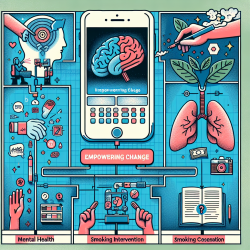In the ever-evolving landscape of healthcare, effective communication is paramount. The study titled "Improving Outpatient Safety Through Effective Electronic Communication: A Study Protocol" offers groundbreaking insights into enhancing electronic communication within healthcare settings. This research is particularly relevant for practitioners aiming to improve patient safety and streamline operations through the use of Electronic Medical Records (EMRs).
The Importance of Effective Electronic Communication
The study highlights that while EMRs are powerful tools for information transfer, they are not without their challenges. Even with state-of-the-art systems like the Veterans Health Administration's Computerized Patient Record System (CPRS), communication breakdowns can occur. These breakdowns can lead to diagnostic errors and delays in treatment, posing significant risks to patient safety.
The research employs a model developed by the Systems Engineering Initiative for Patient Safety (SEIPS) to analyze and improve the processes involved in electronic communication within EMRs. By focusing on three key activities—communication of abnormal test results, electronic referral requests, and provider-to-pharmacy communication via computerized provider order entry (CPOE)—the study provides a comprehensive framework for practitioners to enhance their communication skills.
Key Findings and Practical Applications
- Automated Notifications: The study found that automated alerts for abnormal test results can significantly reduce delays in diagnosis and treatment. Practitioners should ensure these alerts are properly configured and routinely monitored.
- Electronic Referral Requests: By streamlining the referral process through electronic means, practitioners can minimize communication breakdowns. It is crucial to develop clear protocols for referral requests and follow-ups.
- CPOE Systems: Effective use of CPOE systems can enhance communication between providers and pharmacists, reducing medication errors. Training staff on the optimal use of these systems is essential.
Implementing Human Factors Engineering
The research emphasizes the application of human factors engineering to redesign work systems. This involves understanding how tasks are structured and identifying potential sources of error. Practitioners are encouraged to conduct usability testing of their electronic communication systems and make necessary adjustments based on user feedback.
Focus groups and task analyses used in the study provide valuable insights into barriers and facilitators of effective electronic communication. By adopting similar methods, practitioners can tailor interventions to their specific needs, ultimately improving patient outcomes.
Encouraging Further Research
This study serves as a call to action for practitioners to delve deeper into the intricacies of electronic communication in healthcare. By engaging with ongoing research and participating in professional development opportunities such as conferences and webinars, practitioners can stay abreast of emerging trends and technologies that enhance patient safety.
To read the original research paper, please follow this link: Improving Outpatient Safety Through Effective Electronic Communication: A Study Protocol.










